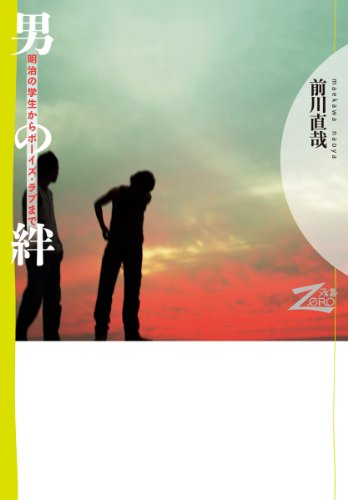274 0 0 0 OA 明治期における学生男色イメージの変容 ――女学生の登場に注目して――
- 著者
- 前川 直哉
- 出版者
- 日本教育社会学会
- 雑誌
- 教育社会学研究 (ISSN:03873145)
- 巻号頁・発行日
- vol.81, pp.5-23, 2007-11-30 (Released:2015-07-14)
- 参考文献数
- 39
- 被引用文献数
- 1
This paper elucidates historical changes in the images of homoeroticism between male students in the Meiji Era and examines the factors behind this change.During the Meiji Era, intellectuals subscribed to a morality that prohibited homosexuality. However, some male students, known as kouha (solid students), shared common values that placed a positive value on homoeroticism between male students. They loathed falling victim to womenʼs charms, and aspired to develop ideal relations between themselves and other elite male students.In the 1900s, the number of girls attending school increased markedly, and the presence of female students increased. These women came to be seen as suitable love or marriage partners for male students. In modern Japan,the emergence of female students helped to form the ideology of romantic love and a new positive image composed of love, marriage, and family.These changes brought about by the emergence of female students had an impact on the images of homoeroticism between male students. After the 1900s, a form of homoeroticism called “love between men” became popular among the nampa (soft students), and the kouha students lost their monopoly on homoeroticism. However, “love between men” was just a substitute for love between men and women. On the other hand,the kouha students strengthened their belief that they should avoid falling in love, as they thought it was too feminine. Therefore, they called close relations between men “friendships between men,” avoiding the use of the word “love.” In this way, homoeroticism between male students was separated into “love between men,” as an imitation, and “friendship between men.” Homoeroticism between male students was transformed into a form adapted to heterosexism.
246 0 0 0 明治期における学生男色イメージの変容:――女学生の登場に注目して――
- 著者
- 前川 直哉
- 出版者
- 日本教育社会学会
- 雑誌
- 教育社会学研究 (ISSN:03873145)
- 巻号頁・発行日
- vol.81, pp.5-23, 2007
This paper elucidates historical changes in the images of homoeroticism between male students in the Meiji Era and examines the factors behind this change.<BR><BR>During the Meiji Era, intellectuals subscribed to a morality that prohibited homosexuality. However, some male students, known as <I>kouha</I> (solid students), shared common values that placed a positive value on homoeroticism between male students. They loathed falling victim to womenʼs charms, and aspired to develop ideal relations between themselves and other elite male students.<BR><BR>In the 1900s, the number of girls attending school increased markedly, and the presence of female students increased. These women came to be seen as suitable love or marriage partners for male students. In modern Japan,the emergence of female students helped to form the ideology of romantic love and a new positive image composed of love, marriage, and family.<BR><BR>These changes brought about by the emergence of female students had an impact on the images of homoeroticism between male students. After the 1900s, a form of homoeroticism called "love between men" became popular among the <I>nampa</I> (soft students), and the <I>kouha</I> students lost their monopoly on homoeroticism. However, "love between men" was just a substitute for love between men and women. On the other hand,the kouha students strengthened their belief that they should avoid falling in love, as they thought it was too feminine. Therefore, they called close relations between men "friendships between men," avoiding the use of the word "love." In this way, homoeroticism between male students was separated into "love between men," as an imitation, and "friendship between men." Homoeroticism between male students was transformed into a form adapted to heterosexism.
12 0 0 0 OA 書評 田中亜以子『男たち/女たちの恋愛:近代日本の「自己」とジェンダー』
- 著者
- 前川 直哉
- 出版者
- 日本女性学研究会
- 雑誌
- 女性学年報 (ISSN:03895203)
- 巻号頁・発行日
- vol.40, pp.52-56, 2019 (Released:2019-12-20)
9 0 0 0 男の絆 : 明治の学生からボーイズ・ラブまで
3 0 0 0 OA 前川直哉著 『男の絆――明治の学生からボーイズ・ラブまでーー』
- 著者
- 前川 直哉
- 出版者
- 青少年問題研究会
- 雑誌
- 青少年問題 (ISSN:09124632)
- 巻号頁・発行日
- vol.64, pp.18-25, 2017-10
- 著者
- 前川 直哉
- 出版者
- 校倉書房
- 雑誌
- 歴史評論 (ISSN:03868907)
- 巻号頁・発行日
- no.796, pp.61-74, 2016-08

